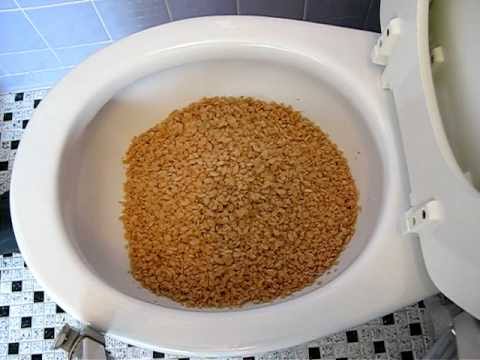Is it Possible to Dispose of Food in the Toilet?
Is it Possible to Dispose of Food in the Toilet?
Blog Article
Everyone may have their own way of thinking on the subject of Is it safe to flush food (especially rice) down the toilet?.

Introduction
Lots of people are usually faced with the problem of what to do with food waste, particularly when it concerns leftovers or scraps. One usual inquiry that emerges is whether it's all right to purge food down the toilet. In this post, we'll look into the reasons individuals may consider flushing food, the effects of doing so, and alternate approaches for proper disposal.
Reasons that people may consider purging food
Absence of recognition
Some people might not be aware of the possible harm triggered by flushing food down the toilet. They may incorrectly think that it's a harmless practice.
Convenience
Purging food down the bathroom might look like a quick and very easy remedy to dealing with unwanted scraps, specifically when there's no neighboring garbage can offered.
Negligence
Sometimes, individuals might merely choose to flush food out of large negligence, without considering the effects of their actions.
Effects of flushing food down the toilet
Environmental influence
Food waste that ends up in rivers can contribute to air pollution and damage water communities. Additionally, the water used to flush food can strain water resources.
Pipes problems
Flushing food can lead to clogged pipelines and drains, creating expensive plumbing fixings and aggravations.
Types of food that ought to not be purged
Coarse foods
Foods with coarse structures such as celery or corn husks can get tangled in pipes and create blockages.
Starchy foods
Starchy foods like pasta and rice can soak up water and swell, resulting in obstructions in pipelines.
Oils and fats
Greasy foods like bacon or cooking oils ought to never ever be purged down the bathroom as they can solidify and trigger clogs.
Appropriate disposal methods for food waste
Making use of a garbage disposal
For homes furnished with garbage disposals, food scraps can be ground up and purged with the pipes system. Nevertheless, not all foods appropriate for disposal in this way.
Recycling
Specific food product packaging products can be reused, lowering waste and minimizing environmental influence.
Composting
Composting is a green means to dispose of food waste. Organic products can be composted and used to enhance dirt for gardening.
The importance of correct waste monitoring
Reducing ecological injury
Proper waste monitoring methods, such as composting and recycling, assistance decrease pollution and preserve natural deposits for future generations.
Securing plumbing systems
By staying clear of the technique of flushing food down the toilet, house owners can prevent expensive pipes repair work and keep the integrity of their plumbing systems.
Verdict
Finally, while it may be appealing to purge food down the commode for ease, it is very important to understand the prospective effects of this activity. By embracing proper waste administration practices and getting rid of food waste responsibly, people can add to healthier plumbing systems and a cleaner environment for all.
FLUSH FOOD DOWN THE TOILET?
FLUSHING FOOD CAN CAUSE BLOCKED DRAINS IN YOUR HOME
All of the plumbing fixtures in your home are connected to the same sewer pipe outside of your home. This outdoor sewer pipe is responsible for transporting all the wastewater from your home to the Council sewer mains. Even small pieces of food that go down the kitchen sink can cause problems for your sewer. It should therefore be obvious that flushing larger bits of food, such as meat, risks a clog in either the toilet itself or the sewer pipes. Flushing greasy food is even more problematic because oil coagulates when it cools, coating the interior lining of your pipes.
THE TOILET IS NOT A BIN
Food isn’t the only thing that people shouldn’t be flushing down the toilet. People use the toilet to dispose of all kinds of things such as tampons, makeup wipes, dental floss, kitty litter and even underwear. Water goes to great lengths to educate residents about the high costs and stress placed on wastewater treatment systems simply from people flushing the wrong stuff down the toilet. It costs taxpayers millions of dollars each year, and homeowners thousands in blocked drain repairs.
FLUSHING FOOD IS A WASTE OF WATER
Flushing food is a waste of our most precious resource - water. In June this year Level 1 water restrictions were introduced to protect water supply from drought conditions. Much of New South Wales continues to be affected by prolonged drought with recent figures revealing up to 97 per cent of the state remains in drought. Depending on whether you have a single or dual flush toilet, every single flush uses between five and 11 litres of water. In the current climate this is a huge amount of water to be wasting on flushing food that should be placed in the bin (or better yet, the compost).
https://www.jabplumbingsolutions.com.au/blog/can-you-flush-food-down-the-toilet

Hopefully you enjoyed reading our section on What Can Happen If You Flush Food Down the Toilet?. Thanks a ton for taking time to browse our blog. You should set aside a second to promote this post if you appreciated it. I thank you for your readership.
Check This Out Report this page